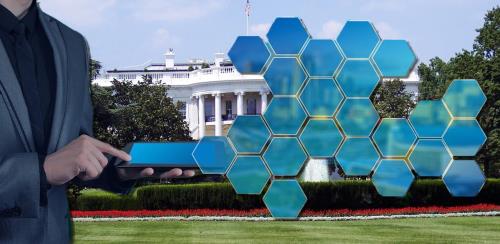Disruptive Tech: Presidential Lessons for Business
- Disruptive technological innovations have historically powered presidential campaigns
- Candidates having the foresight and resources to leverage new innovations effectively secured an unfair advantage
- It’s critical to have the right strategy and perfect timing, and to surround new innovations with the right people and processes
Don’t worry – I wouldn’t think of getting political. But I would like to give a history lesson on how U.S. presidents have benefitted from disruptive innovations, giving candidates with the vision and ability to leverage such innovations an overwhelming competitive advantage. There are also some important lessons for business.

Much discussion in recent years has focused on how presidential candidates use technology innovations, for good or ill – from polling to Twitter to fundraising to get out the vote. But technology use has been an important factor almost since the start of our republic. Following are examples of disruptive innovations and presidential candidates who leveraged them throughout our history:
- Locomotive. William Henry Harrison was the first candidate to leverage the locomotive, running the first multi-city whistleblower train tour in the 1836 and 1840 elections (he beat Martin Van Buren by a landslide in the second race). Many presidential candidates – most effectively Harry Truman with his 30,000-mile whistlestop tour – have used trains to cover multiple cities, giving speeches at each stop.
- Telegraph and Morse code. Abraham Lincoln became our first “wired” president after a telegraph office was opened next to the White House in 1861. The power of long-distance communication became a reality and an opportunity to extend his voice to the masses. After using the telegraph extensively as a tool to win the Civil War, Lincoln leveraged this technology in his 1864 campaign.
- Radio broadcasting. By 1929, 85 percent of non-farm U.S. households had electricity. This, along with the advancement of radio technology during World War I, introduced a new opportunity to directly communicate with U.S. households. Franklin D. Roosevelt was the first U.S. president to use radio communication to reach American households. During his “fireside chats,” he discussed his plans to extricate American families from the Great Depression. FDR continued his fireside radio chats through four consecutive terms as U.S. president.
- Television. The first presidential debate broadcast on television was in 1960, between candidates John F. Kennedy and Richard M. Nixon. This began an era in which television would dominate political campaigns. At the first of four debates, Kennedy arrived looking well-groomed and confident, while Nixon, who refused any makeup, looked haggard with a five o’clock shadow. JFK was a master at leveraging this new technology.
- The Internet. Barack Obama, a relatively unknown senator, was the first presidential candidate to use the Internet to bolster his 2008 and 2012 presidential wins. His campaign used YouTube, Facebook, and LinkedIn to gain free advertising. His campaign also leveraged Web 2.0 cloud tools through Amazon Web Services to establish a scalable technology infrastructure to support a volunteer organization, create a voter database that quickly analyzed target prospect segments and collect more than $1 billion in donations, all while enjoying fast implementation and saving tens of millions in IT infrastructure costs.
- Orca “killer app?” After noting Barack Obama’s huge success with the internet in 2008, Mitt Romney’s campaign team spent seven months in 2012 developing what it thought was a killer Get out the Vote app to dominate Obama’s voter identification program. Orca was deployed to 37,000 volunteers in five battleground states. Unfortunately, the system was never beta tested, and when it was time to implement it, it failed on many basic levels: volunteers were unable to sign in, the system wasn’t scalable and crashed repeatedly, and the connection to Romney HQ broke when Comcast thought all the sudden traffic was caused by a “denial of service” attack. Although leveraging Internet technology, Orca was a disappointing failure.
- Twitter. Donald Trump was widely known from his reality TV show, “The Apprentice.” Reality TV was a new innovation that reached the masses. Trump also become famous for directly reaching out to his supporters via Twitter. As of this writing, his personal Twitter handle has 26.9 million followers. Whether you agree or disagree with his continuous tweets, he is the first presidential candidate to use this medium to such an extent to communicate with his base.
Candidates with the vision to marshal resources, deploying people and processes around these disruptive technologies, have enjoyed real competitive advantages when communicating their messages to the masses in unique new ways. However, it’s not just about using the latest innovations. Kennedy and Nixon were both on TV during the debates, and many candidates used whistlestop train tours, but Truman brought it to a new level, Obama leveraged the internet effectively vs. Romney, who did not.
There have been many effective uses of disruptive innovations in business: 802.11 for wireless data transfer, the cloud, digital printing, search engines, wireless telephony. In each case, the winners were companies that were the most adept at surrounding these new innovations with the right people and process at the right time. Many failed because they underestimated what was involved to drive success, or they misjudged the timing – e.g. the 1998-1999 dotcom bubble.
The lesson for B2B sales, marketing, and product executives: Technology by itself does nothing. You cannot drive success by simply being aware of and leveraging innovations. You must closely monitor technology disruptions that impact your firm and industry, consider the timing of deployment, and surround use cases with the right people and processes. The payoffs and potential competitive differentiation are huge for firms with the vision to tap the power of breakthrough innovations.